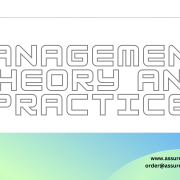Introduction
Digital media is one of the trends that have significantly impacted time-space compression. The effects have raised the alarm. Many research activities are being carried out to ensure that the adverse effects are dealt with accordingly, and the positive ones are supported fully. Digital media is any media that applies electronic gadgets during the supply and distribution of information. It is a type of media that is only modified, viewed, used, formed, and supplied using electric gadgets or devices. Video games, websites, online adverts, social media platforms, videos, and other software are commonly used in digital devices. Digital media has had a significant undeniable influence over people’s lives and is diversely changing the world, especially when it comes to time-space compression. Any phenomenon that affects the relationship and characteristics of time and space is referred to as time-space compression. It has significantly been associated with technological advancements that affect distance, space, and time. Such technologies include digital media in communication, traveling, and economics. In this literature, I will be looking at the effects that digital media has caused on time-space compression. It will start by identifying the types of digital media, then state and discuss some effects, and later on finish y concluding by summarizing what is in the body part.
Body
Digital media has dramatically impacted and affected an individual’s capacity to communicate, express, and connect with people from all over the world and interact with their environment. Various types of digital media affect time-space compression. They include;
- Formats types
- Music/audios that streamed online listened offline or listened through watching in a video format. Some examples of digital audio are songs produced for video streaming sites like (YouTube), video or computer game sounds, audio transmitted over the internet, and songs sold digitally via marketplaces like iTunes and Google Play.
- Videos
Videos, as both audio and visual, can be accessed both online and offline. There are many types of videos format like movies that can be downloaded online or streamlined online from the internet, videos produced for video streaming sites, live videos from recordings or webcam chats, or online conferencing.
- Photos
These photos can be found everywhere on digital devices, whether in computers, phones, or tablets, where they can be tiny illustrations icons. Photos are widely distributed on the internet. They are commonly used to illustrate blog posts and articles, sold as digital art pieces, used as part of website and software interface designs.
- Content types
The content type of media refers to the purpose of the media or what the media is used for, which include;
- EBook
It’s a book published in a digital format. It may be anything from a 10-page PDF on weight loss to a work of literature sold digitally and accessed via an e-reader. They are meant to read and enjoyed using an e-reader or another digital device.
- Blog Posts/Articles
These are shorter than EBooks. They can be accessed online and typically be read in five to twenty minutes. They are to inform the audience about a specific topic.
- Social Media
There are popular social media networks, including Facebook, Twitter, Instagram, and LinkedIn. On social media, content is posted by anyone. Social media is mostly used by individuals to share content with friends and family, by commercial brands to advertise their products and communicate with customers. It’s used by media companies to share their articles and open a dialogue with readers (Coleman, 2010).
- Advertising
Online adverting is another example of digital media. Some types of digital media ads include: for example, search ads, video ads, social media ads.
- Videos Games
They are designed to entertain people’s entertainment. They are mostly played on a gaming console that can be played on a computer, tablet, or smartphone.
Time and space are natural and outside the control of people in a given society. Digital media have proved otherwise as they can modify and compress time and space, which has raised some effects, as indicated in this research paper. The types will be discussed in detail to give a detailed approach to understanding digital media.
Effect of time-space compression on Individual’s ability to communicate
Time-space compression has enabled individuals to communicate quickly and efficiently through the accessibility of information and sharing ideas. Digital medias such as social media platforms and the internet have enabled people to pass information over a considerable distance at the comfort of the place they are in. for example, televisions, radios, and the internet in the united states or any other part of the world are able to pass information to all parts of the world or the interested parties. Time-space compression makes the world appear like a global village where even strangers can communicate very fast and effectively. Before the innovation of digital media, communication was a challenge as it was done using traditional ways that are slow, and information could only be distributed among a small number of people. Today digital media has ensured that information gets to a broad audience and the target group receives information on time and in a more transparent way. Digital media have led to time-space compression, which has ensured communication and hence successful social interaction among people, especially in the political and corporate world. Communication has enabled people to create new friends from all over the world, learn and work overseas away from one’s family, do business with other business people, and create new customers from both within and without one country and continent. Such digital media interactions, and specifically through social media, enable people to interact through communication and not necessarily meet physically. Such communication leads to creating new ideas, the solution to specific problems affecting the modern world, buying, selling, and creating offline and online job opportunities. Time-space compression has enabled distance learning and life-long learning that is done through online learning.
Time-space compression through digital media has led to the freedom of speech. Social media, movies, print media, music, and other media types have been vital in ensuring freedom of speech where people communicate what they think about a given issue, which has significantly impacted finding solutions to various problems. Freedom of speech has enabled people to deal with differences, diversity, and fight for their rights. This has helped many individuals feel accepted in society as they give people a voice. Time-space compression is rapidly spreading all very the world since many people around the globe today can access and use digital media. Some devices like phones, social media, computers, and the internet are less costly, and many people can afford to buy and maintain them (Warf, 2011). Despite enabling effective communication, digital materials have brought about some diverse effects. Many digital devices are prone to hacking where information lands into the wrong hand, interfering with other people’s privacy and security. Digital media have increased harmful activities like propaganda spreading, terrorism, and harassment of individuals by invading their privacy.
Effect of time-space compression on Individual’s ability to express themselves
Digital media has led to time-space compression, where individuals get to express themselves better. Research has indicated that digital media and print media are the leading sources that ensure freedom of expression. Such media do not limit one from giving saying or writing what they feel about a particular issue as long as the message is ethical and accepted by a given society’s standards. Human begins are created to be social beings through sharing and communicating with each other. Social media has help people to communicate with others, for example, through posting photos, contributions, and thought on platforms like Facebook, Twitter, and LinkedIn. Time-space compression has improved the quality of life as people rediscover themselves, their interests, and what they want, especially among adolescents transitioning from childhood to adulthood. Teenagers struggle with expressing themselves, but time-space compression allowed them to explore themselves and express their feelings and thoughts in the exploration process. Digital media have helped people deal with frustrations and depression by hearing from people who suffer the same. Some people get to post their problem freely then get instant help from experts and well-wishers at absolutely no cost.
Freedom of expression brought about by digital media has led to people stating and running their social media accounts and channels where they can earn a decent living from. People and businesses can create their unique content, advertisement, and other pieces of information useful for influencing the public more positively. There are o many ways to use digital media to reach out to a broad audience through time-space compression. This is achieved through sharing ideas, creating art and unique contents, expressing one’s unique view about a given issue, expressing one’s lifestyle, overcoming diversity, standing up for one’s rights, and communicating with people of your interest.
Time-space compression has played a vital role in ensuring globalization is achieved through digital media. This is because of exchanging information, ideas, cultures, images, contents, goods, and services, which ensures successful trading activities. Through globalization, time-space compression has enabled many citizens to vote and protest online to achieve better leadership and lifestyles. It has enabled individuals to express their ideas and participate in global conversations across the world (Warf, 2017). There are some discussions and conversations that are global. Therefore, every individual globalization as one of the agents of time-space compression through digital media helps individuals air their thoughts. For example, international or global discussions involve topics like climate change, terrorism, sports, games, and international politics.
Effect of time-space compression on Individual’s ability to connect
Time-space compression through digital media has enabled individuals to connect despite their geographical location or distance from each other. Digital media and social media platforms such as Facebook, Twitter, WhatsApp, Gmail, and Instagram allow individuals to pass information or messages from one person to another freely. These social media platforms facilitate communication, which enables people to connect. They allow people to connect through posting and sending pictures, images, and sound recordings, among other information pieces. The social media platform mostly attracts youth, business people, activists, and politicians, thereby being a critical way of connecting and changing the world into a better place. A platform like WhatsApp and Gmail help collaboration and teamwork, especially in the corporate world where different business people and employees need to connect to carry out business activities (ZHOU, & LIU, 2016). The connection helps team members to trust each other and carry their duties effectively by connecting every time and seeking clarification from other team members from other parts of the world. Such virtual businesses and teams cannot function without time-space compression that can only be achieved using social media platforms. In the modern world, families have been physically and geographically supported due to education, searching for better lives, and work. Time-space compression, thanks to social media, enables them to communicate more effectively and efficiently, making the bonds remain intact. The connection created by time-space compression has also helped individuals create friends from all over the world.
Digital media also play an important role in businesses worldwide, working together, and opening new branches in other countries through connection. Firms can get many kinds of support, including advice, legal help, monetary help, and business creativity.
Globalization
Globalization combines two inter-related elements: the opening of international borders to increasingly fast flows of goods, services, finance people and ideas, and the changes in institutions and policies at Digital media platforms contribute directly to globalization that contributes to time-space compression. It has had a significant influence on people’s lives in the modern world. Globalization has created many connections or areas of which these areas have benefited from easy access to communication. Therefore, it has created a demand for accessing a particular piece of information that has some value to the user. The demand includes connecting with family, friends, and team members, carrying out businesses online, spreading political propaganda, and discussing some critical issues affecting the globe or society to find the best possible solutions (Kaarsholm, 2013).
Digital media has influenced globalization generally in different areas of globalization. Social media platforms that include Twitter, Facebook, Instagram, and LinkedIn that directly contribute to time-space compression. Economically, there have been trading developments among business people from different parts of the globe. The business has been digitized where people buy and sell items and services online without any physical contact due to geographical differences. Financial exchanges throughout the world due to advanced digital communication across the globe. Businesses can access financial help and business partnerships with other firms from different parts of the globe despite the geographical and time differences through digital media (Al’Abri, 2011).
Communication has significantly contributed to an increase in interactions between different regions of the world. It has helped create new friends, online learning, and connecting with family and friends through online platforms like Facebook and WhatsApp. There is the rapid movement of goods and commodities across the world due to efficient and effective communication.in the digital world, there has been social globalization where information moves People move all the time, mixing and integrating different societies, thereby acting as the agents of globalization and time-space compression (Massey, 2010). Finance has also been globalized as a result of growing technologies and easy banking systems across the world. Countries can borrow money from world banks or each other for financial assistance due to effective communication and time-space compression. Globalization in the financial sector has contributed to the rise of the global financial market in which contracts and capital exchanges have multiplied.
Conclusion
Time-space compression plays a critical role in today’s lifestyle and human activities. Digital media are in the frontline to ensure that time-space compression is achieved all over the globe. Social media, print media, and mass media are some of the digital media that effectively contribute to time-space compression. The effects of time space compression are positively affecting people in the modern world. Technology in communication is positively associated with time-space compression. The internet, computers, smartphones, and other electronic gadgets have been in the front line to ensure time-space compression. The effects of time space compression include globalization; individuals can effectively connect, communicate, and freedom of expression. Other technological advancements should be considered to ensure that the effects of time-space compression grow more to make the world a better place. Technology advancement should be achieved in all parts of the world, so that time-space compression is fully achieved.
Reference;
Kivisto, P. (2012). Time‐space compression. The Wiley‐Blackwell Encyclopedia of Globalization.
Warf, B. (2011). Teaching time-space compression. Journal of Geography in Higher Education, 35(2), 143-161.
ZHOU, K., & LIU, C. (2016). A new method to visualize the time-space compression effect in road network: A case study of Beijing-Tianjin-Hebei region. Economic Geography, (7), 8.
Warf, B. (2017). Time-space compression and the remaking of European topologies. In The Routledge International Handbook of European Social Transformations (pp. 253-268). Routledge.
Al’Abri, K. (2011). The impact of globalization on education policy of developing countries: Oman as an example. Literacy Information and Computer Education Journal, 2(4), 491-502.
Massey, D. (2010). A global sense of place (pp. pp-232). Aughty. org.










